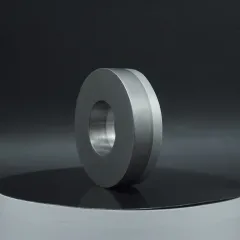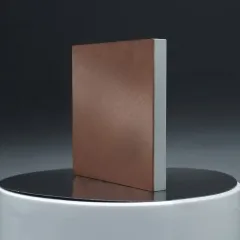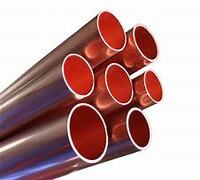1. Introduction
In the past 48 hours, global copper prices surged past $9,200 per metric ton amid supply chain concerns in Chile and rising demand from renewable energy infrastructure—directly impacting copper rod price and copper strip price worldwide. This volatility underscores the importance of understanding the nuances between different copper forms, especially as industries seek cost-effective yet reliable materials for electrical, construction, and recycling applications.

Whether you’re sourcing a copper earth rod for lightning protection, a copper brazing rod for HVAC repairs, or thin copper strips for electronics, not all copper products are created equal. This article dives deep into the key types of copper rods and strips, comparing their composition, performance, and real-world suitability.
2. Copper Rods: Solid, Bonded, and Clad Variants
When professionals refer to ‘copper rod’ or ‘rod copper,’ they’re often talking about solid electrolytic-tough-pitch (ETP) copper—highly conductive and ideal for electrical busbars, welding, and machining. However, for grounding applications, alternatives like copper bonded earthing rod and copper clad steel ground rod dominate due to cost and durability trade-offs.
- Solid copper rods (also called copper round bar or round bar copper) offer superior conductivity and corrosion resistance but come at a premium price.
- Copper bonded steel rods feature a thick molecular bond of copper over a steel core, balancing strength and conductivity—commonly used as earthing rod copper in substations.
- Copper clad steel earth rod uses a thinner electroplated copper layer over steel, making it more affordable but less durable in highly corrosive soils.
For welding and brazing, specialized rods like copper brazing rod or copper to copper brazing rods are formulated with phosphorus or silver alloys to ensure strong, leak-free joints—especially vital in aircon copper pipe installations.
3. Earthing and Grounding: Choosing the Right Rod
Selecting between a pure copper earth rod and a copper bonded ground rod depends on soil conditions, budget, and expected lifespan. Pure copper rods last decades but cost significantly more. In contrast, copper bonded steel offers 25+ years of service at half the earthing rod price.

Key terms like copper clad earth rod and copper clad steel earth rod often confuse buyers. The critical difference lies in the bonding method: bonded rods use continuous extrusion for a thicker copper layer (>250 microns), while clad rods use electroplating (<100 microns). For critical infrastructure, bonded is preferred.
Always verify certifications—ASTM B837 for copper-bonded rods ensures quality and longevity.
4. Copper Strips: From Earthing to Electronics
Beyond rods, copper strip (sometimes misspelled as ‘copper stip’ or ‘copper stripes’) serves vital roles. Flat copper strip is used in switchgear as copper bus bar, while thin copper strips like 1mm copper strip or beryllium copper strip appear in springs and connectors.
Common applications include:
- Copper strip for earthing in data centers and telecom racks
- Copper roof strip for architectural detailing and lightning dissipation
- Nickel plated copper strip for enhanced solderability in PCBs
- Copper earth strip 25x3mm price varies by region but typically ranges $8–$12 per meter
Recyclers often search for ‘copper strip near me’ or ‘roll of copper strip’ to source scrap. However, burning copper wire for scrap is illegal in many areas and damages the metal—opt instead for the best way to strip copper wire using mechanical strippers.

5. Welding and Joining: Rod Selection Matters
For copper rod welding, not just any ‘welding rod copper’ will do. Copper to copper welding rod must match the base metal’s alloy. Pure copper rods require preheating and specialized techniques due to high thermal conductivity.
In HVAC work, technicians use copper rod for welding on aircon copper tube joints. Phosphorus-deoxidized copper rods (like CuP6) prevent porosity and are ideal for copper pipe soldering without flux.
Avoid using aluminum-based rods on copper—this creates brittle intermetallic compounds. Stick to copper brazing rod or copper alloy strip designed for the specific application.
6. Pricing and Sourcing Trends
With copper ingot price climbing, many buyers now consider copper bars for sale made from recycled content. Flexible copper bus bar and copper flat bar are increasingly sourced in bulk to hedge against volatility.
For DIYers and small contractors, searching ‘copper strip price’ or ‘copper rod price’ online reveals wide regional disparities. Buying a roll of copper strip may offer better value than small cuts.
Scrap recyclers should focus on stripping wire for recycling using safe, fast methods—not burning. The best way to strip copper cable involves rotary or automatic strippers, preserving metal integrity and maximizing resale value.
7. Conclusion
From solid copper round bar to copper bonded earthing rod and thin beryllium copper strip, the right choice depends on conductivity needs, environmental exposure, and budget. As copper prices fluctuate, understanding these distinctions helps professionals and hobbyists alike make smarter, more economical decisions—whether installing an earthing system, repairing AC copper pipe, or recycling stripped copper wire.
Our Website founded on October 17, 2012, is a high-tech enterprise committed to the research and development, production, processing, sales and technical services of ceramic relative materials such as Copper. Our products includes but not limited to Boron Carbide Ceramic Products, Boron Nitride Ceramic Products, Silicon Carbide Ceramic Products, Silicon Nitride Ceramic Products, Zirconium Dioxide Ceramic Products, etc. If you are interested, please feel free to contact us.

